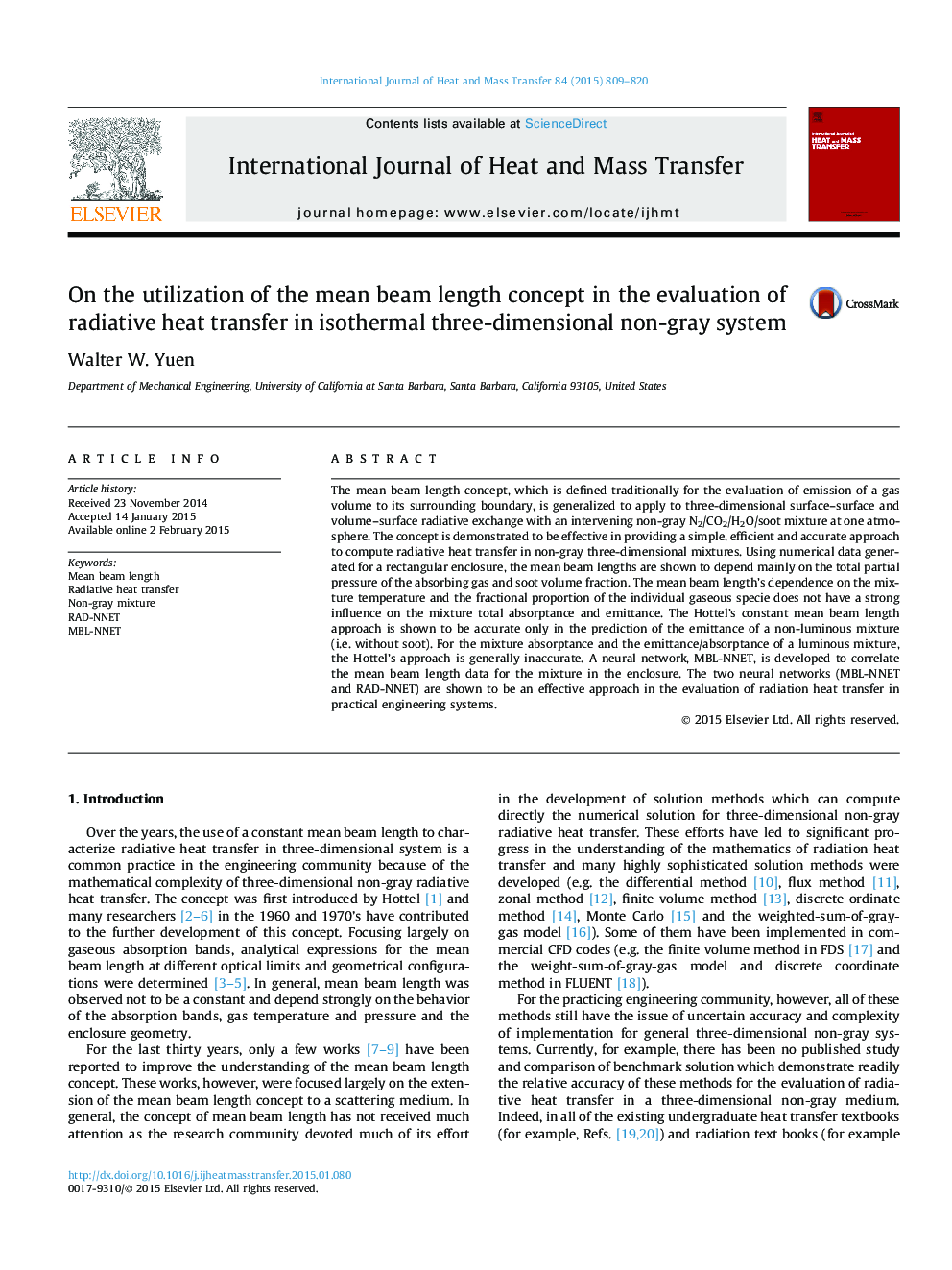| Article ID | Journal | Published Year | Pages | File Type |
|---|---|---|---|---|
| 656972 | International Journal of Heat and Mass Transfer | 2015 | 12 Pages |
The mean beam length concept, which is defined traditionally for the evaluation of emission of a gas volume to its surrounding boundary, is generalized to apply to three-dimensional surface–surface and volume–surface radiative exchange with an intervening non-gray N2/CO2/H2O/soot mixture at one atmosphere. The concept is demonstrated to be effective in providing a simple, efficient and accurate approach to compute radiative heat transfer in non-gray three-dimensional mixtures. Using numerical data generated for a rectangular enclosure, the mean beam lengths are shown to depend mainly on the total partial pressure of the absorbing gas and soot volume fraction. The mean beam length’s dependence on the mixture temperature and the fractional proportion of the individual gaseous specie does not have a strong influence on the mixture total absorptance and emittance. The Hottel’s constant mean beam length approach is shown to be accurate only in the prediction of the emittance of a non-luminous mixture (i.e. without soot). For the mixture absorptance and the emittance/absorptance of a luminous mixture, the Hottel’s approach is generally inaccurate. A neural network, MBL-NNET, is developed to correlate the mean beam length data for the mixture in the enclosure. The two neural networks (MBL-NNET and RAD-NNET) are shown to be an effective approach in the evaluation of radiation heat transfer in practical engineering systems.
